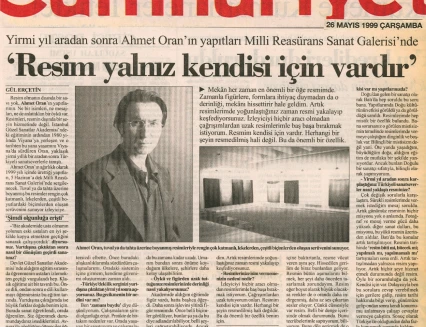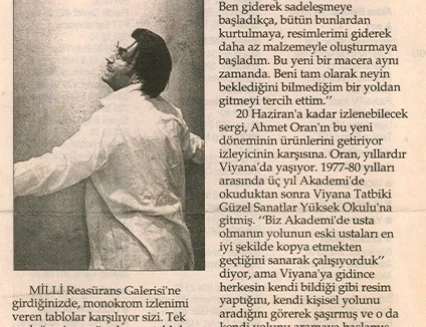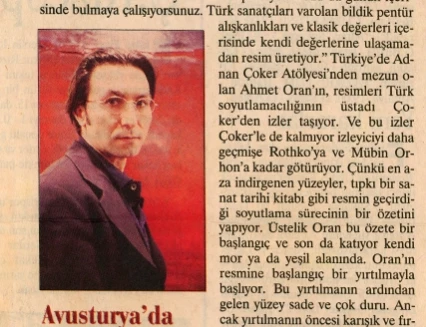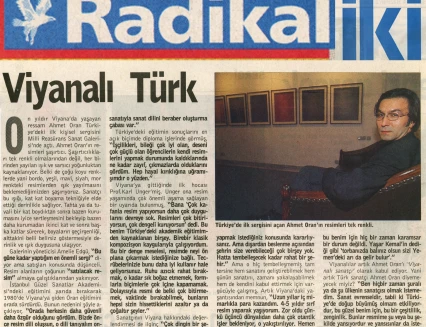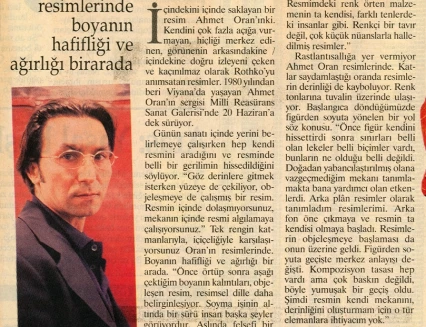Ahmet Oran's Paintings From Canvas Surface to a Deep Inner Journey in Istanbul
The works of Ahmet Oran, a painter who has been living in Vienna since 1980, are at the Istanbul Millî Reasürans Art Gallery between May 11 and June 20, 1999.
The artist, who has held exhibitions in various European cities and whose works are at the Linz Modern Art Museum, is meeting Turkish art lovers.
Ahmet Oran says, "We were working at the Academy thinking that the way to become a master was to copy the old masters in the best way possible." However, these works could neither answer the questions in his mind nor satisfy his artistic soul. Finally, he followed his own path and after three years of Academy education between 1977 and 1980, he found himself at the Applied Fine Arts High School in Vienna. "I was very surprised to see that everyone in Vienna was painting in their own way," he says. After this, he began searching for "what is my path, my language?" He studied with Prof. Carl Unger for five years between 1980-1985 and with Prof. A. Frohner between 1985-1987. He started his painting education in Istanbul and completed it in Vienna at the end of the decade. He entered the world of painting with two exhibitions in Salzburg and Graz in the same year. He has held fifteen solo exhibitions to date, eight of which were in Vienna and the others in cities such as Berlin, Linz and Innsbrück, and participated in eight group exhibitions. The artist's works are in the Linz Museum of Modern Art.
The exhibition opened at the Millî Reasürans Art Gallery in Istanbul is the artist's first important exhibition in Turkey. Gallery director Amelie Edgü states the following regarding the organization of the exhibition: “I knew Ahmet Oran through his works in Vienna and followed him with interest. Over the years, Oran managed to have his art accepted in Europe. He opened an exhibition in Turkey in 1986, when he was still a student. For this reason, Turkish art lovers did not know him. With the exhibition we organized, I can say that Turkish art lovers are meeting Ahmet Oran, whom they have heard of and whose successes they have followed, for the first time.”
